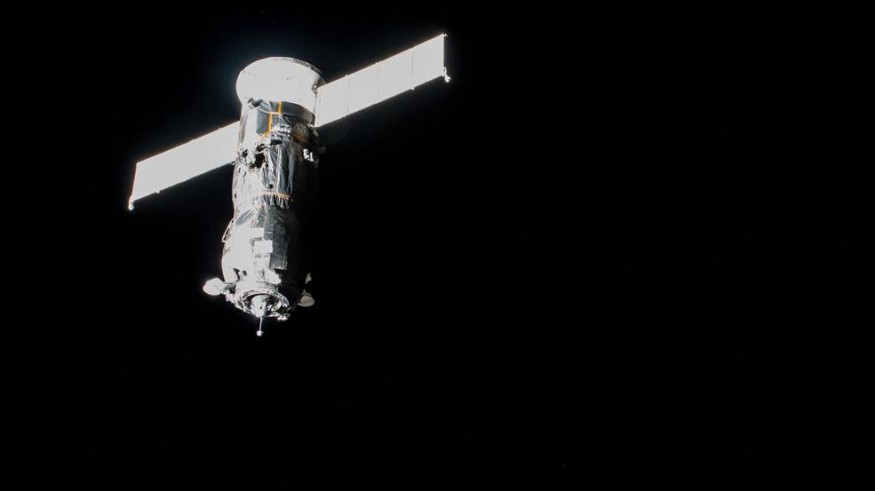Reports said that the Russian Progress MS-17 cargo spaceship has been undocked from the Poisk module and left the International Space Station (ISS) after 24-hour parking.
The movement will get the Nauka module ready to arrive at the new Prichal nodal module. Before the progress M-UM module launch with a nodal module in November, the Progress MS-17 ship should eventually depart the ISS and de-orbit.
Space.com said NASA described MS-17 as Progress 78 or 78P, cargo since the Progress trip to the International Space Station is Russia's 78th. The Progress MS is a Russian automated spacecraft that the country created to provide maintenance to orbiting stations. It transfers fuel, research experiments, oxygen, water, and food to the International Space Station and modifies its orbit.

Progress MS-17 Spacecraft Undocks From ISS Facing Mongolia
TASS, citing the Roscosmos, said the spacecraft would most likely travel across Mongolian steppes at this time. The Progress MS-17 will next have to fly autonomously for 29 hours. After that, on Friday morning, it will dock with Russia's new Nauka module.
The Russian resupply spacecraft is automatically undocked from the Russian Poisk module. It pulled away from the station to a distance of roughly 180-190 kilometers at 7:42 PM EDT on Wednesday. Progress will conduct station-keeping operations to maintain a safe distance from the space station for more than 24 hours.
Next, the spacecraft will begin approaching the Nauka multifunctional laboratory, which was added to the station in July, preparing for a scheduled docking on Friday at 12:23 AM EDT. One of the two nadir ports on the Nauka module will be occupied by the Progress spacecraft.
Russian Cosmonauts to Oversee Module Relocation
NASASpaceFlight said Russian cosmonauts Pyotr Dubrov and Anton Shkaplerov would oversee the transfer. Progress, on the other hand, should be in charge of the entire process. Both cosmonauts have been trained to take over redocking operations in the event of a problem. Although cosmonauts will utilize the Kurs automatic docking system in practice.
Progress MS-17, which has been docked to the space station since July 2, will remain there until its final departure in late November. The crew aboard the station will load the Progress spacecraft with spent and undesired supplies, which, once de-orbited, will burn up in the Earth's atmosphere together with the ship itself, as with all Progress missions.
Because of the importance of the APAS-to-SSPV adaptor presently on Nauka's nadir port, Progress' departure will be carefully scheduled around the launch of Prichal. If cosmonauts eliminated this and Prichal failed to launch, the Russian portion would lose a vital docking port for Soyuz and Progress passengers. As a result, MS-17 will return once Prichal is ready to take over.
Spacecraft Parked For Too Long is Unusual, NASA Says
It's rare for a spacecraft to be in place so close to the space station for so long. But NASA says the extra time will help with the redocking operation.
NASA spokesperson Leah Cheshier said in an email to Space.com that the 24-hour undocking/redocking period would allow Russian flight controllers to arrange the equipment on Nauka to accept the Progress. While Russia is doing the work, Cheshier explained that the vehicle backs away safely from the station.
In a statement about the move, NASA officials stated that Progress MS-17 (Progress 78) would undertake leak inspections of the Nauka module propellant lines before using its thrusters to provide "orientation control" of the station.
RELATED ARTICLE : Soyuz Relocates To New Docking Port on the ISS Before Next Crew Arrives
Check out more news and information on Space in Science Times.
© 2025 ScienceTimes.com All rights reserved. Do not reproduce without permission. The window to the world of Science Times.











